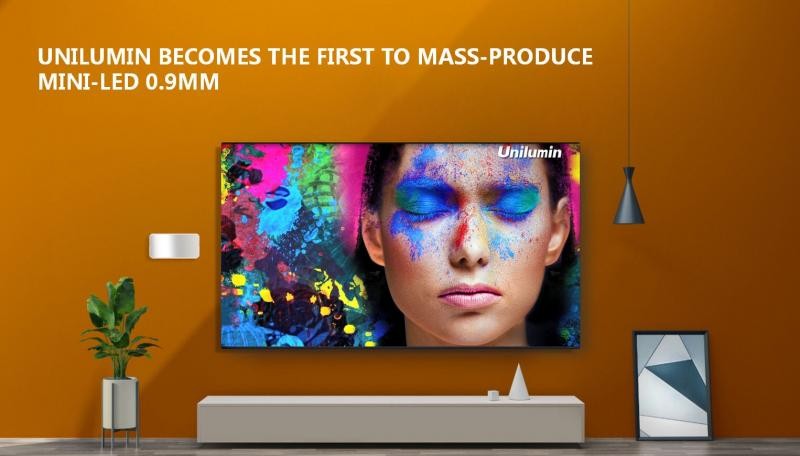In the modern world, LED technology is everywhere. These standard LEDs usually measure 1000 microns (0.04 inches) across, and are used in a variety of applications. As the science has developed, however, even more refined versions of this technology have been created. Mini LEDs and micro LEDs function similarly to standard LEDs, but on a much smaller scale. Mini LEDs tend to measure 200 microns across, while micro LEDs can be as small as 100 microns, or 0.004 inches, across. While micro LEDs represent the theoretical optimization of LED technology, the mini LED serves as a transitional technology between standard LEDs and micro LEDs. They promise substantial gains in performance from standard LEDs, while being much easier to produce than micro LEDs.

Conceptually, the micro LED display and the mini LED display function quite similarly. A backlit LED matrix contains myriad individual diodes, whose color and brightness can be controlled independently to generate countless images and patterns.
Structurally, the micro LED display is actually simpler than the mini LED display. Scaling the technology down to the micro LED level means that the structural design of the overall LED board can be simplified, due to reduced weight and stress concerns. However, while this technology is structurally simpler, it takes a higher level of sophistication to achieve this design on a micro-scale.
Both mini and micro LED systems are manufactured through similar means. Manufacturing mini LEDs tends to have higher yield rates than micro LEDs, due to the relative size and complexity of each technology. Mini LED display lights can also be manufactured more energy efficiently.
LED mini display lights are applicable to the majority of current LED applications, including electronic devices, video games, automobile displays, and more. Micro LEDs can be applied to the same uses, although their higher cost makes mini displays preferable in these cases. Micro LEDs excel in applications such as compact wearable technologies and virtual reality, where clarity in a small physical space is essential.
Mini LED screens are easier to mass-produce using existing manufacturing facilities, as they are similar to the current LEDs that are already under mass production. In contrast, micro LEDs generally require an investment in new manufacturing infrastructure, as they are a revolutionary technology and cannot be produced through traditional means.
Mini LEDs are far superior to traditional OLED technology for application in smartphone devices. Backlit Mini LED displays are clearer and more compact than OLED displays, and also have superior color rendering while maintaining high contrast and brilliant brightness in sophisticated gaming monitors. Once the cost of manufacturing infrastructure is invested, Mini LEDs are actually cheaper to produce than OLED displays, by a margin of 70 to 80 percent. They also have a longer life, and are not susceptible to the "burn-in" and image retention issues of traditional OLED screens.
Another application that mini LEDs were developed for is direct-view LED displays in automobiles. OLED displays can have an issue where they are too bright when viewed directly, but too dim when viewed indirectly, making them dangerous for implementation in automobile displays. Mini LEDs solve this issue through their finer granularity and brightness control.
In recent years, LCD television technologies have slipped in performance and market share versus OLED technologies. This divide is particularly notable in the most profitable, high-end part of the television and display market, where each unit purchased from a competitor holds a great deal of value. Mini LEDs present an opportunity for LCD screen developers to gain a second win in this market race, and produce a product that can compete better in today's hectic global market.
It is possible to integrate mini LED displays with a "chip on board" (COB) architecture, driving the brightness and colors of each individual mini LED in the display without the need for an externally integrated driver. As mentioned in the discussion on automotive application, this sort of integration allows this technology, which is superior for use in automotive and similar direct-view compact applications, to be integrated seamlessly as a single package. This simple integration is promising for the future of narrow pixel pitch LED displays being included in a broad serviceable market.
In addition to all of the promising application of mini LED displays that exist now, there are several fields that mini LEDs can be applied to on a wide scale in the near future. The entertainment field is one that is hungry for technologies such as mini LEDs. The world's best cinemas have already moved beyond projector technologies to standard LED displays; in the future, as customers continue to look for superior entertainment experiences, mini LEDs are the logical next step. A cinematic screen made up of this technology is the future of film entertainment.
Another entertainment application of mini LEDs is in the virtual reality sphere. In this field, compact and detailed photo and video representation is essential, and mini LEDs stand as the best technology to achieve virtual reality in a compact headset or other design space. The common thread between all of these future prospects of mini LEDs is the advantage of this technology when it comes to having smaller pixel pitch. This is the buzzword for display developers of any type in the future, and this is where mini LEDs have their edge.
The Unilumin 0.9mm Mini LED is one of the mos promising forerunners of mini LED technology in the modern day. Announced in 2019, this mini LED measures in at 900 microns, which is larger than the theoretical minimum for this technology, but much smaller than the market standard as it stands today. The Unilumin Mini LED is demonstrated to be functional in small and large applications, and is an excellent starting point for investing in mini LEDs for your products